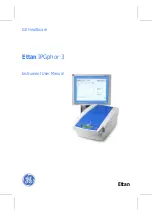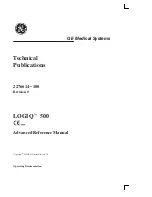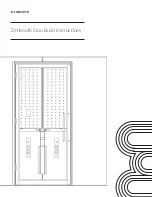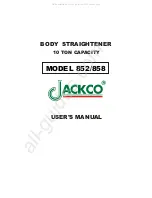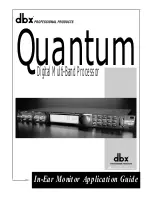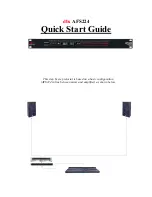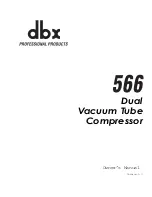
OPTICS ADJUSTMENT
COMPONENT REMOVAL
• Place your PCB into a holder or the preheater board holder that is within the base frame of the
fi
xture.
• Attach the appropriate N51 hot air nozzle and vacuum cup to the hot air handpiece.
• Slide the Optics Module left to the stop.
• Adjust the Zoom and Focus of the lens to bring the PCB into clear view.
• Release the X-Axis and/or Y-Axis Brakes as needed to bring the component to be removed into view.
• Using the Light Intensity controls on the right side of the Optics Module, adjust the top (white) LED lighting and bottom
(blue) LED lighting so the outline of the hot air nozzle and the component are visible at the same time. If necessary,
adjust the Aperature of the lens if the lighting is too dark or too bright.
• Using the X-Axis and/or Y-Axis Fine Adjustment knobs, align the nozzle so that it is encompasses the component.
• If necessary, you can square the nozzle to the component using the Theta Adjustment knob [R].
• Slide the Optics Module right to the stop.
• Engage the Right Lock by tightening the knob.
• Release the Z-Axis Brake and lower the nozzle over the component.
NOTE: You can use the adjustable Z-Axis Stop [S] to ensure the nozzle can be repeatedly lowered to the same height.
• Engage the vacuum pickup system of your HAKKO hot air station and lower the vacuum pickup. Once the vacuum
pickup makes contact with the component, turn the vacuum pickup knob one-half turn counter-clockwise to enable
the pickup indicator on the handpiece.
• Start the rework pro
fi
le of your HAKKO hot air station.
• When the pro
fi
le is complete and the pickup indicator has risen, indicating complete re
fl
ow, release the Z-Axis Brake
and raise the nozzle to remove the component.
• Release the Right Lock by loosening the knob.
• Place a heat resistant tray or pad below the nozzle and turn off the vacuum pickup to release the removed compo-
nent.
NOTE: The vaccum pickup may retain vacuum for 10 to 15 seconds after you turn it off. Please wait for the component
to release.
NOTE: Flux residue or a worn vacuum cup may cause the component to stick. Use a probe or tweezers to release the
compoenent.
OPERATION
BEFORE USING THE HJ4000 FIXTURE - ADJUST THE OPTICS USING THE FOLLOWING PROCESS
• Place a PCB into a holder or the preheater board holder that is within the base frame of the
fi
xture.
• Extend the vacuum pickup tube from the handpiece.
• Release the Z-Axis Brake [C] and lower the handpiece so the vacuum pickup tube is above the PCB.
• Release the X-Axis Brake [D] and/or Y-Axis Brake [E] as needed to move the vacuum tube so it is above a clearly identi
fi
-
able target on the PCB, such as a round pad or
fi
ducial.
• Using the X-Axis Fine Adjustment [F] and/or Y-Axis Fine Adjustment [G], align the vacuum tube with the target.
• Now that you’ve mechanically and visually con
fi
rmed a correlation between the handepiece vacuum tube and a
target on the PCB, engage the Right Lock [H] by tightening the knob, then release the Z-Axis Brake and raise the hand-
piece to the top.
• Slide the Optics Module [J] left until it stops.
• Adjust the Zoom [K] and Focus [L] of the lens to bring the PCB target into clear view.
• Using the Light Intensity [M] controls on the right side of the Optics Module, adjust the top (white) LED lighting and bot-
tom (blue) LED lighting so the vaccum tube and target on the PCB are visible at the same time. If necessary, adjust the
Aperature [N] of the lens if the lighting is too dark or too bright.
• Using an M1.27 hex wrench, adjust the two set screws [P] on the left side of the Optics Module to adjust the horizontal
image alignment between the vacuum pickup tube and the target on the PCB. When adjusting, be sure to loosen one
screw before tightening the other screw. Failure to do so will likely damage the adjustable base for the prism.
• If the image alignment needs to be aligned vertically, you will need to make small adjustments to the prism.
• Using an M2.0 hex wrench, adjust the top-right screw for the prism platform through the Access Hole [Q1] in the Optics
Module. Adjusting this screw causes the image aligment to adjust vertically.
• Using an M2.0 hex wrench, adjust the lower-left screw for the prism platform through the Access Hole [Q2] in the Optics
Module. Adjusting this screw causes the image as a whole to move vertically.
• Repeat the adjustments as necessary until you have a satisfactory image alignment, then release the Right Lock by
loosening the knob.
NOTE: For greater accuracy, use two contact reticles or an HJ4000 Optics Calibratoin Kit (Optional - PN: 999-719) in place
of the PCB target and vacuum pickup tube.
CAUTION: DO NOT OVERTIGHTEN THE PRISM PLATFORM SCREWS AS THAT CAN CAUSE DAMAGE TO THE PRISM PLATFORM.
CAUTION: DO NOT BEND OR TWIST THE OPTICS MODULE AS DOING SO WILL ADVERSELY AFFECT THE ALIGNMENT.
INITIAL SETUP (CONTINUED)
• After adjusting the three set screws for the heater pipe, use the same M1.5 hex wrench to secure the single set screw for
the handle in the handpiece socket.
• Rotate the handpiece socket to align the
fl
at channel with the theta adjustment pin and install the theta adjustment
arm [B].
• Place your HAKKO FR-870B/FR-872 Preheater (optional) or other PCB holder within the base frame of the
fi
xture.
HJ4000 PART NAMES
[D] X-Axis
Brake
[E] Y-Axis Brake
[C] Z-Axis
Brake
[F] X-Axis Fine Adjustment
[G] Y-Axis Fine Adjustment
[S] Z-Axis Stop
[T] Z-Axis Fine Adjustment
[K] Lens Zoom
[L] Lens Focus
SD Card Slot
Camera Power
Button
Camera Power
Receptacle
HDMI
USB
[J] Optics
Module
[H] Right Lock
[A] Handpiece
Socket
[R] Theta
Adjustment
[B] Theta
Adjustment
Arm
[M] Top Light
Intensity
Control
[M] Bottom Light
Intensity
Control
Optics
Module
Power
Receptacle
[N] Lens Aperature
[P] Horizontal
Image Alignment
[Q1] Prism
Adjustment
Access
[Q2] Prism
Adjustment
Access








